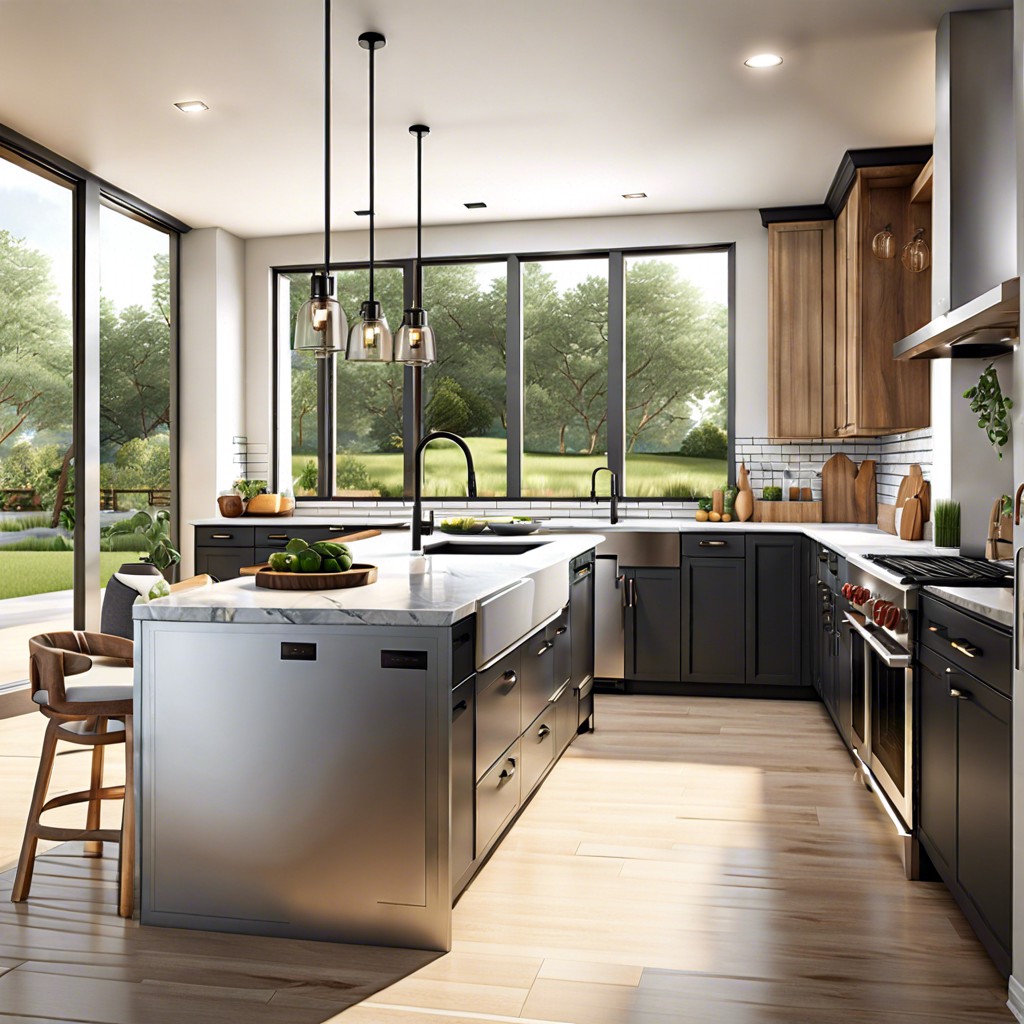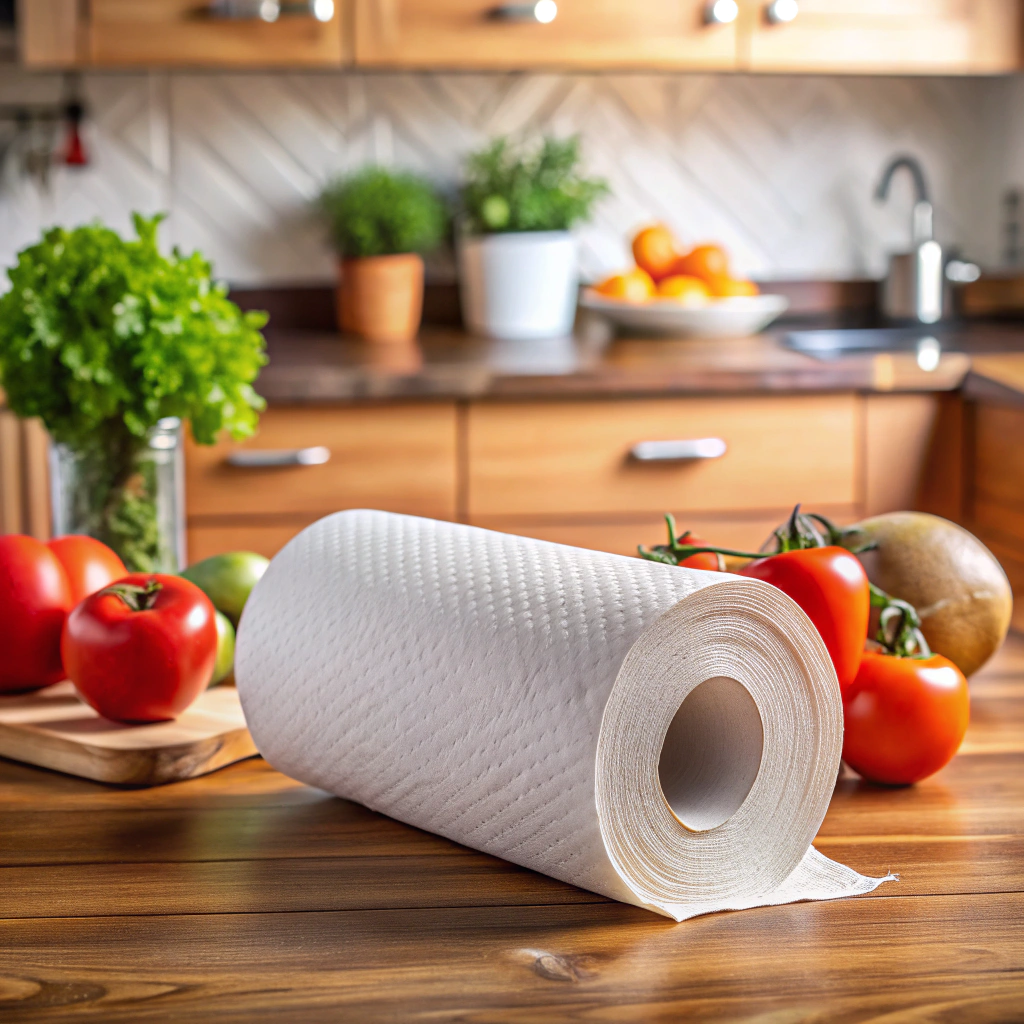Last updated on
Discover practical tips for maximizing efficiency and style in your kitchen through thoughtful design layout choices.
Key takeaways:
- U-shaped layout grants ample counter space and cabinetry.
- Galley layout provides a space-efficient solution for small homes.
- Island layout serves multiple purposes and optimizes workflow.
- Peninsula layout integrates flexibility and space savings.
- Strategic layout is crucial for efficiency and workflow optimization.
What's Inside
Common Types of Kitchen Layouts

The U-shaped layout, often a favorite among home cooks, envelops the chef on three sides, granting ample counter space and cabinetry. It’s ideal for those who desire a closed-off, separate kitchen area or have ample space to work with. Conversely, the L-shaped kitchen, defined by its perpendicular countertops, offers a more open-plan style and seamlessly merges with adjacent living areas, making it a perfect fit for socializing while preparing meals.
For smaller homes and apartments, the galley or corridor-style kitchen, characterized by parallel counters, is a space-efficient solution that provides a functional cooking zone without excess square footage. Although compact, it can still be highly effective with careful planning of the layout sequence to minimize steps between key work areas.
Islands are not just for large kitchens; even modest-sized ones can incorporate an island if properly sized. The island layout serves multiple purposes – providing additional work space, housing appliances, or becoming a casual dining area. While it can be an independent feature, it’s often combined with an L-shaped or a straight-line kitchen to optimize the workflow and social interaction.
Lastly, the peninsula kitchen offers a great compromise, integrating the flexibility of an island layout with the space savings of a U or L-shaped layout. It provides an additional countertop that juts out from a wall or cabinetry, acting as a room divider and sometimes taking the place of a more traditional island.
Each layout has its unique merits and challenges, but the goal remains the same—to create a harmonious balance between functionality, comfort, and aesthetics.
Designing for Small Spaces
Maximizing vertical space is paramount in confined kitchens. Stretch cabinetry up to the ceiling and consider open shelving to avoid a claustrophobic feel. This technique draws the eye upward, creating an illusion of more room.
Ingenious storage solutions are your best friends. Look for multi-functional furniture like a movable island with storage or a dining table with drawers. These pieces work double duty by providing additional prep space and a home for your kitchen essentials.
Embrace light colors, as they make spaces feel larger. Think whites, light grays, or soft beiges for walls, cabinets, and backsplashes. Reflective surfaces, such as glossy tiles or stainless steel, can also amplify light and give a sense of more space.
Minimalism goes a long way in a small kitchen. Keep countertops clutter-free, selecting a few stylish appliances that serve multiple purposes. Decorative items should be kept to a minimum or integrated into the design, such as hanging utensils that double as design elements.
Ultimately, a strategic layout is crucial. The classic working triangle—connecting the sink, stove, and refrigerator—optimizes efficiency. In smaller kitchens, consider a galley layout or an L-shaped design with a central island, if space allows, to maintain that workflow while incorporating modern needs and styles.
Choosing the Best Kitchen Layout: Key Considerations
Selecting the optimal kitchen layout hinges on harmonizing functionality with aesthetics. Think about the kitchen’s triangle—location of the stove, sink, and refrigerator. Aim for short, unobstructed paths between these trio points to streamline cooking and cleaning tasks.
Consider the room’s dimensions to determine if a U-shaped, L-shaped, galley, or island layout will be most efficient. Each configuration offers unique benefits; for instance, a U-shaped kitchen maximizes counter space, while an island can become a multifunctional centerpiece for cooking, dining, and socializing.
Reflect on the number of cooks that typically use the kitchen. A layout with generous space around the main work areas is essential to avoid congestion, especially in households where cooking is a shared activity.
Don’t overlook storage needs. Plan sufficient cabinetry and pantry space to accommodate all kitchen essentials while maintaining a clutter-free environment.
Pay attention to the natural flow of traffic. A kitchen should promote easy movement to and from dining and living areas without interrupting the cooking zones.
Finally, consider the placement of windows and doors. Natural light can make a significant difference in a kitchen’s ambiance, and strategic placement can enhance ventilation and reduce reliance on artificial lighting during the day.
Utilizing Floor Plans and 3D Visualization Tools
With the advent of technology, planning a kitchen makeover has become more intuitive and precise. Floor plans serve as the blueprint of your kitchen layout. They allow you to see the spatial arrangement from a bird’s-eye view, helping you to place cabinets, appliances, and counters efficiently.
Moving a step further, 3D visualization tools are quite the game changers. They bring your two-dimensional ideas into a vibrant three-dimensional reality. Imagine being able to walk through your future kitchen, experiencing the flow of space and light before even a single tile is laid. It’s both practical and exhilarating.
These tools often come with drag-and-drop features, enabling you to experiment with different layouts quickly. Want to see how an island fits into your U-shaped kitchen? Drag it into the plan and voilà! Concerned about whether the sunlight will cause glare on your shiny new countertops in the afternoon? The 3D simulator can mimic lighting conditions as well.
Moreover, such tools can be incredibly beneficial when communicating with contractors. Instead of waving hands and trying to describe that ‘airy feel’ you’re going for, you can show them precisely what you mean with a model.
It’s important to note, however, that while these tools are helpful, consulting with a professional designer can ensure that considerations like work triangle optimization and building codes are met. Nonetheless, these digital resources are indispensable for getting a realistic grasp of your kitchen’s potential and becoming actively involved in the design process.
Innovative Lighting Solutions Within Kitchen Layout
Effective lighting is a game-changer in kitchen design, transforming both the functionality and atmosphere of the space. Layering different types of lighting can create a versatile and dynamic kitchen environment. Task lighting is crucial over worktops, sinks, and cooking areas, ensuring safety and ease while slicing, dicing, or simmering. Under-cabinet LED strip lights or recessed spotlights are perfect for this.
Ambient lighting sets the overall mood of the kitchen. Flush-mounted ceiling fixtures, a central pendant, or even discreetly placed wall sconces can provide a warm and inviting glow, softening the edges of the room and filling in any shadows cast by task lights.
Accent lighting adds depth and dimension, showcasing architectural features or highlighting artwork. Consider directional track lights or adjustable recessed cans to spotlight these special details.
For an interactive culinary space, where friends and family can gather, incorporate dimmer switches to adjust the lighting to the occasion. With smart home systems, you can even program lighting scenes that change with the tap of a smartphone.
Don’t forget the power of natural light. While not adjustable, well-placed windows or skylights can flood a kitchen with sunshine, saving energy and enhancing wellbeing. Combine natural with artificial light sources for a balanced and harmonious layout.




